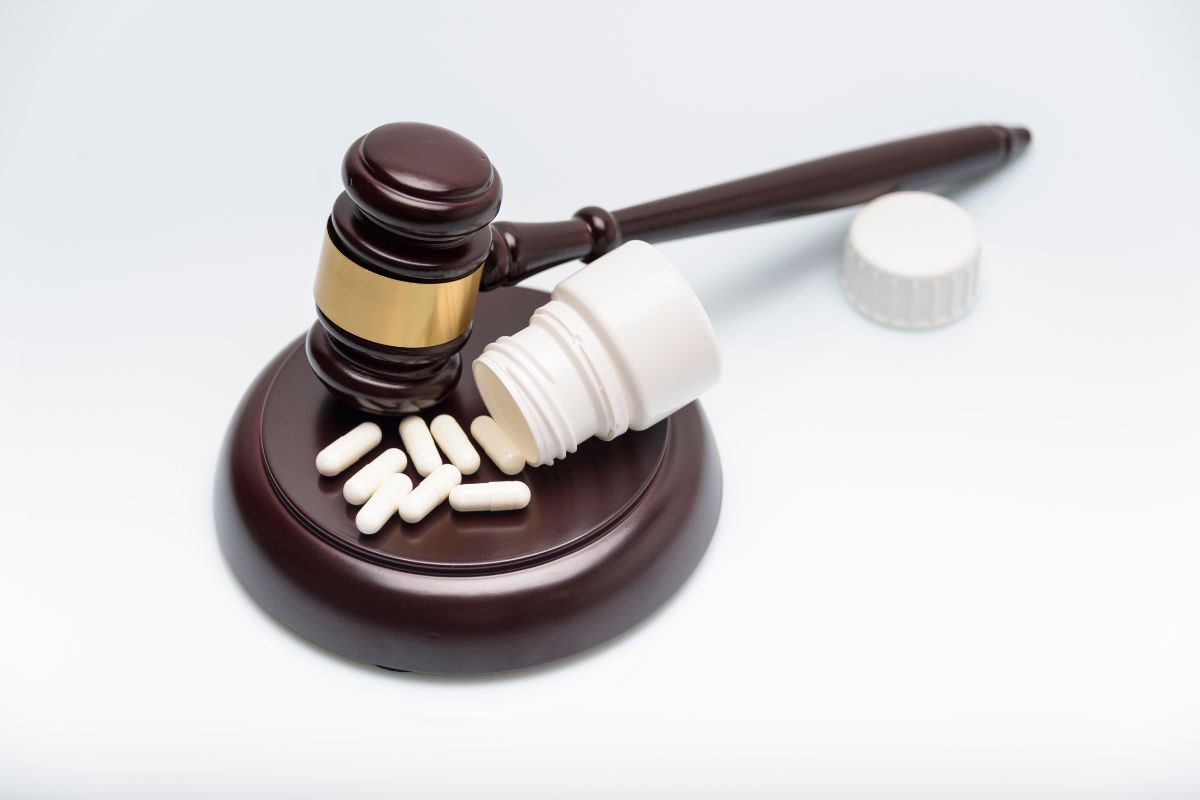What is the Production of a Controlled Substance?
Production of a Controlled Substance is an offence under section 7 of the controlled drugs and substances act. For a plain-language overview, see our FAQ on what is drug production.
Examples
An example of the offence of Production of a Controlled Substance may include:
- A person operates a clandestine lab out of the garage of a residence, where they mix various chemicals and ingredients in order to produce MDMA/ecstasy
Defences
A strong defence to a charge of production of a controlled substance will vary depending on the circumstances of what occurred. However, some defences may be:
We also cover common strategies in our guide to the best defences to a drug charge.
- The accused did not know the criminal nature of the substance.
- The accused did not intend to mislead, and the concealment was merely the result of a lack of information and was not intentional. This is closely related to an honest mistake, however, the available information may also play a factor.
- The identity of the accused, or the date, time, or location in which the offence occurred was not properly established by the police.
- There is a lack of material information which supports the allegation that the accused produced a controlled substance. This may include a lack of documented evidence, physical evidence, or witness testimony.
- The Charter: if evidence was obtained through an unreasonable search or seizure, such evidence can be excluded. Again, it is advisable to discuss the evidence seized and the totality of the circumstances with a lawyer.
Punishment
The maximum penalty for a conviction under Section 7 of the CDSA is a term of imprisonment for life. However, this depends on the schedule of the controlled substance that is alleged to have been produced. Some schedules are straight indictable, others are a hybrid offence. For context, here’s the difference between indictable and summary offences.
Whether you intend to plead guilty to a charge under section 7 of the CDSA is important to consult a lawyer prior. There may be factors which apply to your punishment/sentencing which are relevant and important for consideration, which may result in a lesser punishment.
Overview of the Offence
Production of a controlled substance is an offence under section 7 of the controlled drugs and substances act (CDSA).
7 (1) Except as authorized under the regulations, no person shall produce a substance included in Schedule I, II, III, IV or V.
(2) Every person who contravenes subsection (1)
(a) if the subject matter of the offence is a substance included in Schedule I or II, is guilty of an indictable offence and liable to imprisonment for life;
(c) if the subject matter of the offence is a substance included in Schedule III or V,
(i) is guilty of an indictable offence and liable to imprisonment for a term not exceeding ten years, or
(ii) is guilty of an offence punishable on summary conviction and liable to imprisonment for a term not exceeding eighteen months; and
(d) where the subject-matter of the offence is a substance included in Schedule IV,
(i) is guilty of an indictable offence and liable to imprisonment for a term not exceeding three years, or
(ii) is guilty of an offence punishable on summary conviction and liable to imprisonment for a term not exceeding one year.
7.1 (1) No person shall possess, produce, sell, import or transport anything intending that it will be used
(a) to produce a controlled substance, unless the production of the controlled substance is lawfully authorized; or
(b) to traffic in a controlled substance.
The section defines the offence as the possession, production, or importation of chemicals, substances or ingredients, and that those substances, by manufacturing, synthesising, or using any means of altering the chemical or physical properties of the substance, were used to produce a scheduled substance that is controlled under the Controlled Drugs and Substances Act.
In order for a person to be convicted of production of a controlled substance in criminal court, the crown is required to prove their case beyond a reasonable doubt. The crown must also prove several elements of the offence. The presumption of innocence applies in that the accused is presumed innocent until convicted of the offence.
The Guilty Act (Actus Reus)
The actus reus for the offence of production of a controlled substances is established by proof, beyond a reasonable doubt, of the following:
- The accused possess the materials and/or chemicals which are the required ingredients to produce the controlled substance
And;
- Produced that substance, by manufacturing, synthesizing, or using any means of altering the chemical or physical properties of the substance
The Guilty Mind (Mens Rea)
The mens rea for production of a controlled substance is established by proof, beyond a reasonable doubt, of the following:
- The accused knowingly and intentionally produced the substance, and;
- Knew the production would result in the formation of the controlled substance
Defences
How to beat a charge of production of a controlled substance.
Each circumstance is different, and the best defence available is contextual based on the details. However, the following are some common defences that may be used against a charge of production of a controlled substance:
Proving the identity of the accused
There are several aspects to this defence, however, one may rely on whether there was evidence seized by the police, which directly implicates the accused. The accused’s identity, as well as the date, time, and location of the offence, are necessary for the crown to prove beyond a reasonable doubt. If a clandestine lab is located where a controlled substance is being produced, the crown must prove beyond a reasonable doubt that the accused had ownership, control, or access to the laboratory.
Proving possession of the controlled substance produced
There are several aspects to this defence. The crown is required to prove, beyond a reasonable doubt, that the had possession of the controlled substance produced. This requires proving that the person had knowledge of the controlled substance, consented to possession, and controlled it (knowledge, consent, and control).
Lack of Actus Reus
The crown is required to prove beyond a reasonable doubt that the accused’s actions contributed to the manufacturing and production of the controlled substance. Merely being caught in possession of the controlled substance is likely not sufficient for a conviction. Receipts proving that the accused purchased items which were seized and used as ingredients for production, as well as physical access to the laboratory, and surveillance photos taken by police or other means of confirming the accused had attended the laboratory where the controlled substance was produced are all factors of evidence.
Ensuring the evidence was obtained lawfully / Charter breaches
It is advisable to consult a lawyer in such circumstances, however, there may be circumstances where evidence was obtained from the accused person without their consent, and where they held a reasonable expectation of privacy. If this is the case, it is important to seek consultation from a lawyer to ensure that the accused’s rights under section 8 of the Canadian Charter of Rights and Freedoms were not violated. If they were, there have been circumstances where the courts have deemed the evidence seized in this manner inadmissible.
Evidence, and how it was seized, although always important to examine diligently, is especially so in circumstances where a person is charged under the controlled substances act. Drug-related offences require the crown to prove, beyond a reasonable doubt, possession of the controlled substance. In order to seize the controlled substance, this requires police enforcement to trigger section 8 of the Charter. If the police did not obtain a search warrant, or judicial authorization prior to seizing evidence, or the warrant is deemed unsatisfactory by a judge, this may result in a breach of section 8 of the charter. In addition, if information has been obtained from a laptop or cellular device that has been seized as evidence, it is important to determine the accused’s expectation of privacy in this context, and whether the police obtained warrants to search the devices, or were required to. There are remedies available under section 24 of the charter, which may include the exclusion of evidence or the charges to be stayed or dropped altogether
Punishments
The maximum penalty for a conviction under Section 7 of the CDSA is a term of imprisonment of up to 14 years.
Whether you intend to plead guilty to a charge under section 7 of the CDSA, it is important to consult a lawyer prior. There may be factors which apply to your punishment/sentencing which are relevant and important for consideration, which may result in a lesser punishment.








